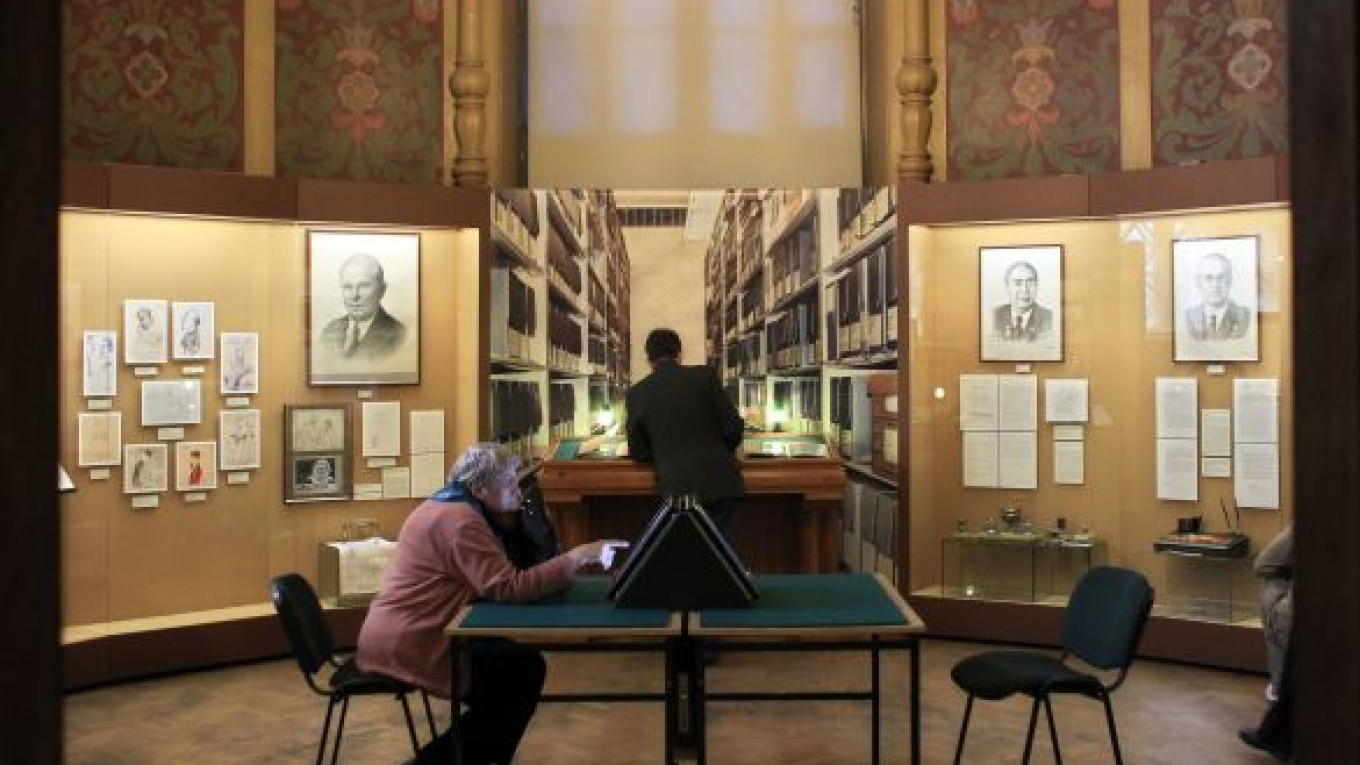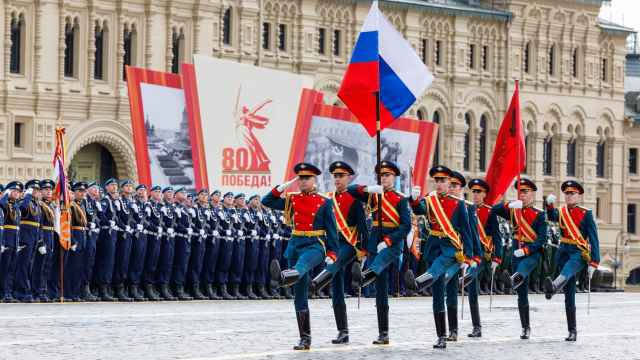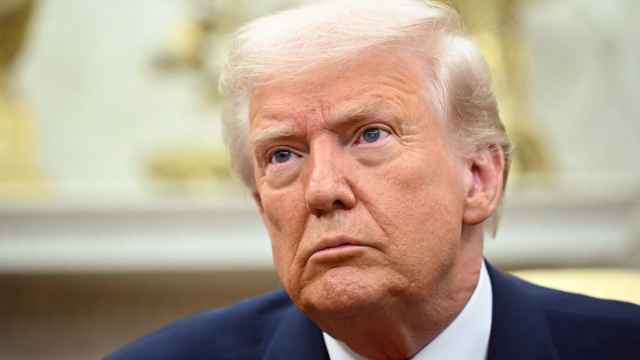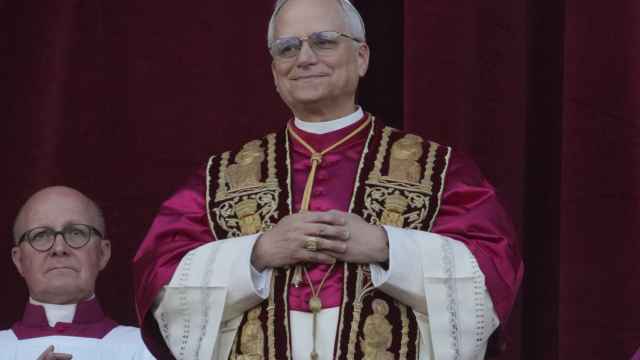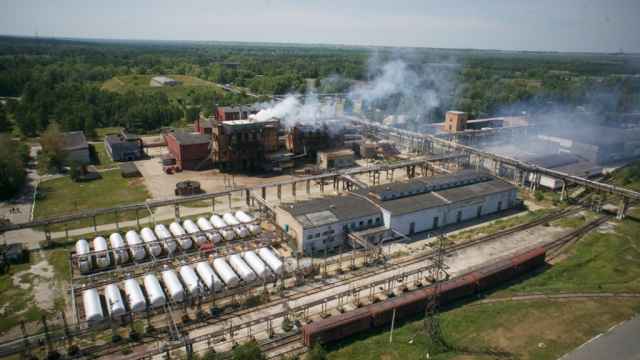For the first time ever, ordinary Russians can now see documents that appear to confirm long-standing rumors that Vladimir Lenin had Jewish heritage.
In a country long plagued by anti-Semitism, such heritage can be a significant taint, especially for the founder of the Soviet Union who is still revered by many elderly Russians.
Among dozens of newly released documents on display at the State Historical Museum is a letter written by Lenin's eldest sister, Anna Ulyanova, saying their maternal grandfather was a Ukrainian Jew who converted to Christianity to escape the Pale of Settlement and gain access to higher education.
"He came from a poor Jewish family and was, according to his baptismal certificate, the son of Moses Blank, a native of [the western Ukrainian city of] Zhitomir," Ulyanova wrote in a 1932 letter to Josef Stalin, who succeeded Lenin after his death in 1924.
"Vladimir Ilych had always thought of Jews highly," she wrote. "I am very sorry that the fact of our origin — which I had suspected before — was not known during his lifetime."
Under tsarist rule, most Jews were allowed permanent residence only in a restricted area that became known as the Pale of Settlement that included much of present-day Lithuania, Belarus, Poland, Moldova, Ukraine and parts of western Russia.
Many Jews joined the Bolsheviks to fight rampant anti-Semitism in tsarist Russia and some were among the leaders of the Communist Party when it took power after the 1917 Revolution. Most prominent among them was Leon Trotsky, whose real name was Bronstein.
But Lenin, who was born Vladimir Ilych Ulyanov in 1870, identified himself only as Russian. He took Lenin as his nom de guerre in 1901 while in Siberian exile near the Lena River.
A brief period of promotion of Jewish culture that began under Lenin ended in the early 1930s when Stalin orchestrated anti-Semitic purges among Communists and hatched a plan to relocate all Soviet Jews to a region on the Chinese border.
Ulyanova asked Stalin to make Lenin's Jewish heritage known to counter the rise of anti-Semitism. "I hear that in recent years anti-Semitism has been growing stronger again, even among Communists," she wrote. "It would be wrong to hide the fact from the masses."
Stalin ignored the plea and ordered her to "keep absolute silence" about her letter, according to the exhibition's curator, Tatyana Koloskova.
Lenin's official biography, written by his niece Olga Ulyanova, said his family had only Russian, German and Swedish roots.
The letter from Lenin's sister became available to Russian historians in the early 1990s, but its authenticity was fiercely disputed. It was chosen for inclusion in the exhibit by Koloskova, who as director of the State Historical Museum's branch dedicated to Lenin is one of the most authoritative scholars on his life.
The exhibition in the museum on Red Square, near the mausoleum where Lenin's body still lies, also discloses that he was in such misery after suffering a stroke in 1922 that he asked Stalin to bring him poison.
"He did not incidentally pick Stalin to fulfill this request," Lenin's youngest sister, Maria Ulyanova, wrote in a 1922 diary entry. "He knew Comrade Stalin as a steadfast Bolshevik, straight and devoid of any sentimentality. Who else would dare to end Lenin's life?"
Initially, Stalin promised to help Lenin, but other Politburo members decided to turn down his request, the letter says. Trotsky, whom Stalin forced out of the Soviet Union, claimed in his memoirs that Stalin had poisoned Lenin.
The 111 documents on display, many of them only recently declassified and all of them open to the public for the first time, give surprising insights into top figures of the Soviet Union. Men usually portrayed as stern and fearless are seen as sometimes whimsical, frightened and even despairing.
One of the documents contains a desperate plea that Stalin received in 1934 from an arrested Communist leader, Lev Kamenev, whose real name was Rosenfeld.
"At a time when my soul is filled with nothing but love for the party and its leadership, when, having lived through hesitations and doubts, I can boldly say that I learned to highly trust the Central Committee's every step and every decision you, Comrade Stalin, make," Kamenev wrote. "I have been arrested for my ties to people who are strange and disgusting to me."
Stalin ignored this letter, too, and Kamenev was executed in 1936.
A slightly more humorous — but no less macabre — aspect of the exhibition is caricatures drawn by Politburo members.
Nikolai Bukharin, a leading Communist ideologue, depicts Stalin with a giant, exaggerated nose and his trademark pipe. His portrayal of other Communists is also unflattering — one is shown as a White Army officer. The anti-Communist White Army, which was backed by Western powers, unsuccessfully fought Lenin's Red Army in a civil war from 1917 to 1923.
Prominent economist Valery Mezhlauk ridicules Trotsky as a Wandering Jew and depicts a finance minister hanging in an awkward position. In a handwritten note under the latter caricature, Stalin recommends that the minister be hanged by his testicles.
The minister and both cartoonists were arrested and executed in 1938.
The exhibition, which opened this month, runs through July 3.
A Message from The Moscow Times:
Dear readers,
We are facing unprecedented challenges. Russia's Prosecutor General's Office has designated The Moscow Times as an "undesirable" organization, criminalizing our work and putting our staff at risk of prosecution. This follows our earlier unjust labeling as a "foreign agent."
These actions are direct attempts to silence independent journalism in Russia. The authorities claim our work "discredits the decisions of the Russian leadership." We see things differently: we strive to provide accurate, unbiased reporting on Russia.
We, the journalists of The Moscow Times, refuse to be silenced. But to continue our work, we need your help.
Your support, no matter how small, makes a world of difference. If you can, please support us monthly starting from just $2. It's quick to set up, and every contribution makes a significant impact.
By supporting The Moscow Times, you're defending open, independent journalism in the face of repression. Thank you for standing with us.
Remind me later.


